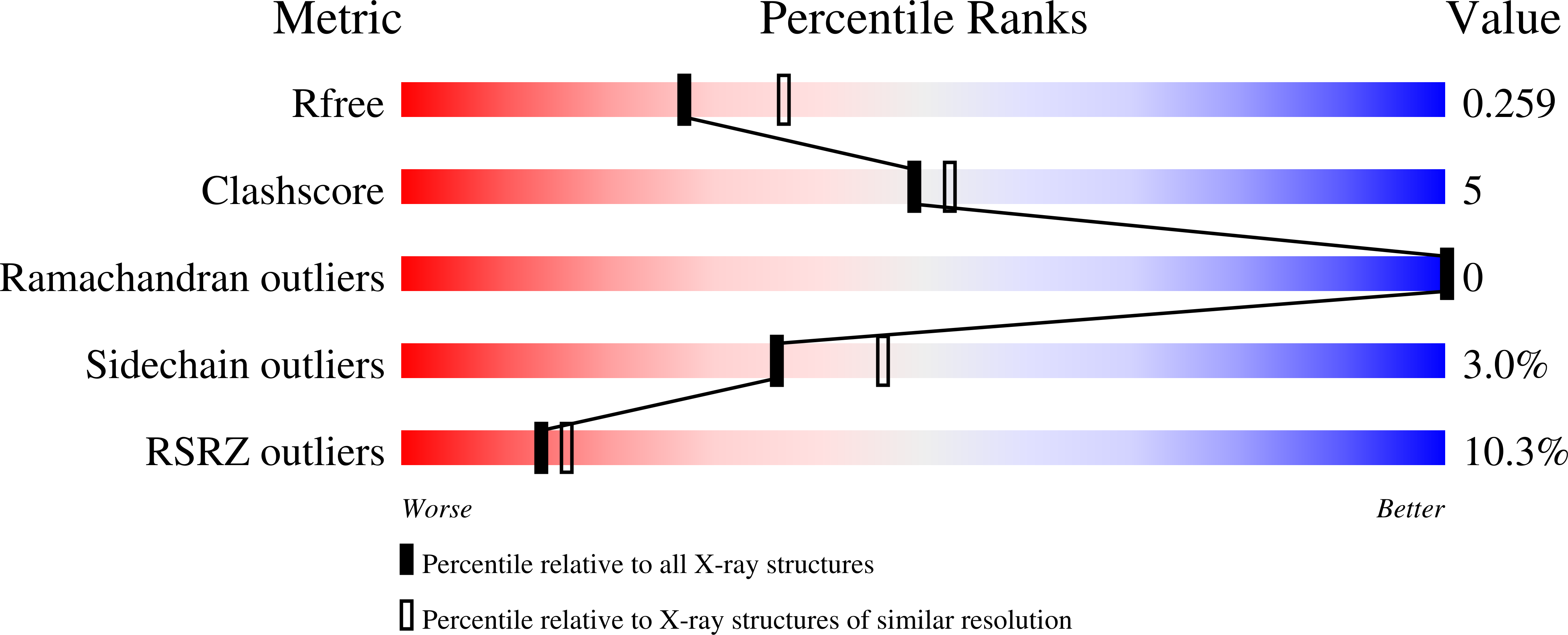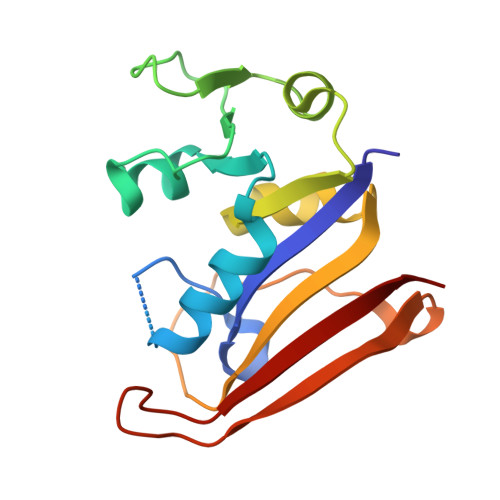Expanding the Landscape of Dual Action Antifolate Antibacterials through 2,4-Diamino-1,6-dihydro-1,3,5-triazines.
Georgiades, J.D., Berkovich, D.A., McKee, S.R., Smith, A.R., Sankaran, B., Flentie, K.N., Castaneda, C.H., Grohmann, D.G., Rohatgi, R., Lasky, C., Mason, T.A., Champine, J.E., Miller, P.A., Mollmann, U., Moraski, G.C., Franzblau, S.G., Miller, M.J., Stallings, C.L., Jez, J.M., Hathaway, B.A., Wencewicz, T.A.(2025) ACS Infect Dis
- PubMed: 39950956
- DOI: https://doi.org/10.1021/acsinfecdis.4c00768
- Primary Citation of Related Structures:
9DAQ, 9DAR - PubMed Abstract:
Antibiotics that operate via multiple mechanisms of action are a promising strategy to combat growing resistance. Previous studies have shown that dual action antifolates formed from a pyrroloquinazolinediamine core can inhibit the growth of bacterial pathogens without developing resistance. In this work, we expand the scope of dual action antifolates by repurposing the 2,4-diamino-1,6-dihydro-1,3,5-triazine (DADHT) cycloguanil scaffold to a variety of derivatives designed to inhibit dihydrofolate reductase (DHFR) and disrupt bacterial membranes. Dual mechanism DADHTs have activity against a variety of target pathogens, including Mycobacterium tuberculosis , Mycobacterium abscessus , and Pseudomonas aeruginosa , among other ESKAPEE organisms. Through X-ray crystallography, we confirmed engagement of the Escherichia coli DHFR target and found that some DADHTs stabilize a previously unobserved conformation of the enzyme but, broadly, bind in the occluded conformation. Using in vitro inhibition of purified E. coli and Staphylococcus aureus DHFR and disruption of E. coli membranes, we determined that alkyl substitution of dihydrotriazine at the 6-position best optimizes the DADHT's two mechanisms of action. By employing both mechanisms, the DADHT spectrum of activity was extended beyond the scope of traditional antifolates. We are optimistic that the dual mechanism approach, particularly through the action of antifolates, offers a unique means of combating hard-to-treat bacterial infections.
Organizational Affiliation:
Department of Chemistry, Washington University in St. Louis, One Brookings Drive, St. Louis, Missouri 63130, United States.















